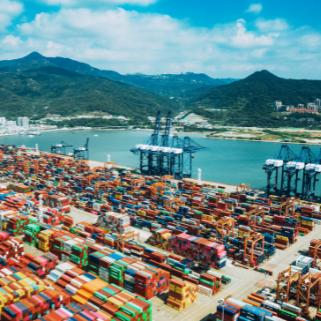 U.S., UK Announce Agreement to Drop Tariffs
U.S., UK Announce Agreement to Drop Tariffs
The U.S. and the United Kingdom have announced an agreement under which they will each drop tariffs imposed on each other’s goods several years ago.
Beginning June 1, the U.S. will replace its Section 232 tariffs on steel and aluminum from the UK with tariff-rate quotas allowing up to 500,000 tons of UK steel and 12.3 thousand tons of UK aluminum to enter the U.S. duty-free each year, though those amounts may be adjusted annually. Imports in excess of these amounts will be subject to the existing tariffs, which are 25 percent and 10 percent, respectively.
Steel products must be melted and poured in the UK to enter under the TRQ, although a small amount may be further processed in the EU. Semi-finished (wrought) aluminum products may not contain primary aluminum from China, Russia, or Belarus to qualify for the TRQ.
The UK, in turn, will suspend its retaliatory tariffs on more than $500 million worth of goods imported from the U.S., including whiskey, blue jeans, motorcycles, and other products.
The agreement requires any U.K. steel company owned by a Chinese entity to undertake an audit of its financial records to assess influence from the Chinese government and share the results of that audit with the U.S. The U.S. will be able to prohibit imports of steel from such companies under the TRQ if certain conditions are not met.
In addition, the U.S. and the UK committed to share publicly available information on (1) customs matters, including how to approach detection of fraud, evasion, and circumvention of duties, (2) trade remedies, including possible self-initiation of trade enforcement actions, and (3) non-market excess capacity and its effects on their respective steel and aluminum industries. The two sides also may share publicly available import data with respect to steel, including from third-country markets, and will consult each other regarding import surges.
Source: Sandler, Travis & Rosenberg, P.A.
 Downhill or uphill from here?
Downhill or uphill from here?
Trucking capacities have been increasing but the sky-rocketing fuel price is constraining the growth. On the other hand, consumer demands have decreased to a 10 year low.
With all of this, supply and demand is expected to reach a rough equilibrium.
And now for the golden question: “will my package arrive on time?” As of now, it seems like the supply chain is past the hardest points and will stabilize. So yeah, you will get your package. No promises though!
Source: JOC
 Hindered Operations
Hindered Operations
Shenzhen and Hong Kong, key Chinese ports, are seeing a record high-level of congestion due to the extreme COVID-19 lockdowns with as many as 174 vessels anchored or loading off the South China terminals.
To offset impeding delays, ships are being redirected to other ports within China. If the disruption were to carry on too much longer, the supply chain will be thrown off-kilter.
Inopportune Time
Although it’s never a great time to have a disruption in the supply chain, it’s especially concerning for the US ports which are finally catching up on their congestion. Delays in China will likely create another round of bottlenecks for goods which are set to arrive for this summer.
The supply chain industry has been through the wringer these past two years and it just seems like there is no end in sight. Across the board, there is a lot of frustration surrounding cargo capacities and delays. At All-Ways Forwarding, we hope to be able to help you work around the system and get your shipments to their respective destinations on time.
Source: Transport Topics

